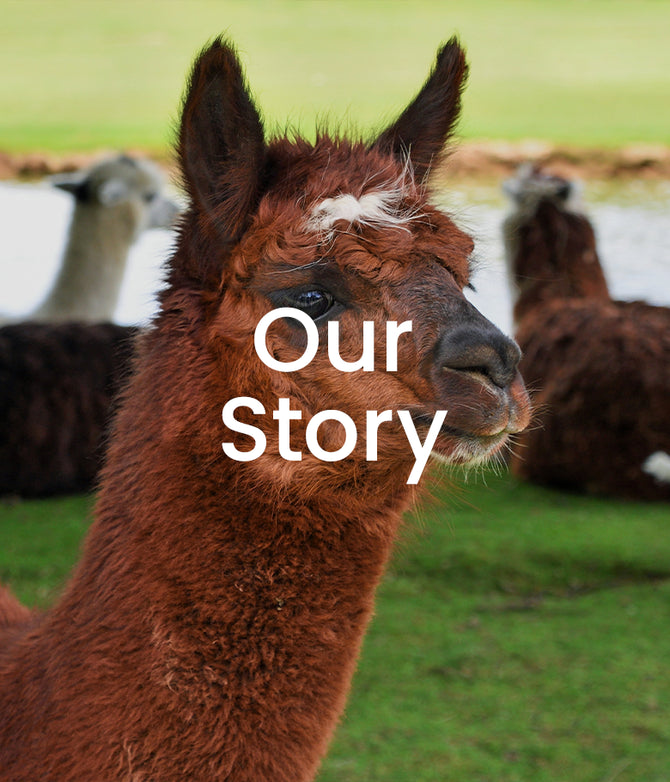Machu Picchu Travel
Everything You Need to Know for Your Machu Picchu Trip
Published 18th October, 2020 | Updated 9th of November 2020
Machu Picchu: A Modern Wonder
Now lockdown is over in most places, including Peru, we can start moving towards “normality” again. And part of “normality” is travel planning! Machu Picchu is a very popular tourist spot, attracting millions of visitors annually (well, at least before the pandemic) to Peru. For most, a visit to Machu Picchu is a once in a life time experience, so here are all the essential tips to ensure your trip goes off without a hitch.
Author’s note: This article is written based largely on pre-pandemic experiences of Machu Picchu. The site has just reopened to the public and it is not clear if and when things will return to as they were. For example, there is currently a transition period where tickets are very limited (the site is operating at 30% capacity), but there is no official confirmation of how long the transition period will last. Please see our Peru Travel Updates article for up to date information about traveling to and within Peru during the pandemic.
Click on the section titles below to jump to section

What is Machu Picchu?
Machu Picchu is an archaeological site nestled in the southern Andes of Peru, on top of a mountain ridge. It is thought to have been built by the Inca in the 15th century for the emperor Inca Pachacutec. There is much mystery surrounding the origins, purpose and downfall of Machu Picchu; explorer Hiram Bingham claimed it as the fabled “Lost City of the Incas”, but later archaeologists found evidence to contradict this. The mystery, history and mysticism of the citadel, alongside its astounding natural beauty, attracts millions of visitors – from history buffs, to nature lovers, to those looking for that perfect Insta-shot – from all over the world.
Back to top
Where is Machu Picchu?
Part of what makes Machu Picchu spectacular, is where it is built: high up on a mountain ridge in the middle of the cloud forest. It is around 80km (50 miles; as the crow flies) northwest of the city of Cusco, in southern Peru. It is located in the Andes mountain range, at an altitude of 2,430m.a.s.l. (7,970ft.a.s.l.; the main site). At the bottom of the hill lies Aguas Calientes - otherwise known as Machu Picchu Pueblo - a tiny town on the shores of the mighty Urubamba River, which really only exists to serve the visitors to this majestic place.

Back to top
How to Get to Machu Picchu
Although Machu Picchu is only 80km (50 miles) from Cusco, the rugged landscape of the Andes makes it surprisingly hard to get to! Here are the main options:
Back to top

How to Visit Machu Picchu
You need a ticket to enter Machu Picchu, that can be purchased through the government website or at the Dircetur offices in Cusco or Aguas Calientes. Pre-pandemic, there were 5,000 tickets available each day split between different time slots in the morning and afternoon. Overall, you could almost always find tickets to enter the site, although some of the time slots would sell out during peak season. There were an additional 500 tickets available for access to Huayna Picchu Mountain as well as the main site, and 800 tickets for Machu Picchu Mountain and the main site. The tickets for the mountain hikes tended to sell out very quickly, so you needed to get them 3-6 months before your visit in peak season.
The site is open from 6am until 5pm and there are regular shuttle buses from the town of Aguas Calientes (approximately 25 minutes) from 5:30am to 5:30pm (last bus up 3pm). During 2019, they introduced a system to reduce bus queues in the morning, that involved Machu Picchu entry tickets with specific time slots (e.g. you could only catch the 5:30am buses if you had a 6am entry ticket). You can also walk up to/down from the site on a steep trail (around 500m (1,640ft) of altitude change over about 5km (3.1 miles)) from Aguas Calientes. It takes most people 1.5 hours or more to hike up.
Machu Picchu reopened on the 1st of November. Tickets are free of charge for all visitors until the 31st of December and must be obtained in advance here. There are currently 675 tickets will be available daily, in different time slots, and groups are limited to 7 people per guide. Touring the site with a guide was not obligatory at the time of writing.
NOTE: During November 2020 at least, the hiking trail to Machu Picchu from Aguas Calientes is closed, so all visitors must use the shuttle bus.
Note that there are no toilets inside the citadel, the only ones are just outside the gates. The cost is s./2 (around €0.50 / £0.45) per visit and if you leave the site to use the toilet, you will not be allowed to re-enter to continue your tour, unless you have a ticket to hike one of the mountains. You can be fined if you are caught urinating or defecating within the citadel!
Back to top

What to Do & See in Machu Picchu?
The site itself involves quite a lot of walking – the steps start not far from the main entrance – although the government authority has made it slightly more accessible for people with physical limitations. The main circuit brings you past all the key sites:
- The Guard House (for the best views)
- The Temple of the Sun
- The Temple of the Three Windows
- The Inti Huatana (optional)
- The Sacred Rock
- The Temple of the Condor
The circuit takes most people 1 to 2 hours to complete, depending on how many pictures you take and how much your guide (if you have one) talks!
Hiking in Machu Picchu:
- The Inca Bridge: This footpath heads to a viewpoint over what is thought to have been one of the entrances to the site, traversing a sheer cliff. Easy, around 30-60 minutes round trip from the Guard House.
- The Sun Gate (Inti Punku): This path leads to the iconic entry point of the Inca Trail, offering panoramic views from a different aspect. Moderate, between 1-2 hours round trip from the Guard House.
- Machu Picchu Mountain: This trail climbs to the highest point on the site (3,050 m.a.sl. / 10,000ft.a.s.l.) for incredible views of the citadel and surrounding mountains. Moderate to strenuous, around 2-4 hours round trip from the entrance to the footpath.
- Huayna Picchu Mountain: This trail climbs to the top of the sugar loaf peak you see in the background of the iconic photos. This is a short, but steep hike. If you have the time, you should continue the circuit (rather than descend by the same path) to visit the little-visited Temple of the Moon. It is a hidden gem and a great way to escape the crowds. Moderate to strenuous, around 1-2 hours round trip out and back (or 2-4 hours round trip circuit with Temple of the Moon) from the trailhead.
You need a separate ticket for Machu Picchu Mountain and Huayna Picchu Mountain, which can sell out months in advance. Both trails are steep and involves lots of steps and steep drop-offs.
Whilst it is possible to visit Machu Picchu as a long day trip from Ollantaytambo (3 hours by train round trip), or a very long day trip from Cusco (7 hours round trip by train), it is recommended to spend one night in Aguas Calientes (Machu Picchu Pueblo), to break up the journey and perhaps even give you time for two visits to Machu Picchu at different times of the day. Lots of people travel to Machu Picchu during the afternoon of day one and stay the night so they can visit early the next morning. Others prefer to head to Aguas Calientes during the morning on day one, do an afternoon tour of the site, stay overnight, then head back up early the next morning for one of the mountain hikes on day two. Choosing whether to visit once or twice is entirely a personal choice.
Back to top

When To Go To Machu Picchu
Machu Picchu is a year-round destination, although the rainy season (December through April) may affect your experience of the views due to cloud cover. High tourist season is from May through September, with the peak being June to August (inclusive). That said, most months (other the second half of January into March) were very busy up until 2019. Cloud cover and rain is more likely during the rainy season, but some people think the clouds moving through add to the mystical feel of the citadel.
Historically, the mornings are always much busier than the afternoons, so an afternoon visit will give you a break from the crowds. However, if you want to climb Huayna Picchu or Machu Picchu Mountain, you will need to go in the morning, as the trails are closed in the afternoon.
Back to top
Where to Stay in Machu Picchu Pueblo
Aguas Calientes is not a particularly attractive town in itself, as it is full of hotels, restaurants and souvenir shops. However, as mentioned above, staying at least one night is usually a good idea, to ensure you really enjoy the experience of visiting Machu Picchu. It’s worth noting that since Aguas Calientes is a tourist hot spot, hotels here tend to be more expensive than equivalent hotels in other parts of Peru, while the quality tends to be lower. Also, due to the nature of the town, it is almost impossible to escape nighttime noise – be it from the river in rainy season, the trains, or loud music from the bars and restaurants – so if you are a light sleeper, take some ear plugs with you.
There are so many hotels, hostels and guest houses to choose from, so check Trip Advisor or Booking.com (or one of the many other accommodation booking sites and apps) for the property that best fits your requirements and budget. Below are some of the top picks for the higher end hotels:
3* Hotels
- Taypikala
A simple but comfortable 3* hotel, up the hill from the Aguas Calientes plaza. Rooms are spacious and have good amenities. A varied buffet breakfast is included and is served from early morning. - Tierra Viva
On the way out of town towards Machu Picchu, this hotel is closer to the bus stop and plaza of Aguas Calientes. Rooms are comfortable with the amenities you'd expect of a 3* property and the price includes breakfast.
4* Hotels
- El Mapi by Inkaterra
A more affordable version of Inkaterra's other properties, El Mapi still provides the character and luxurious touch you would expect from this hotel group. Their spa has views out over the cloud forest and the price generally includes breakfast and dinner. - Casa Del Sol Boutique
Much smaller than the other hotels listed, this property only has 14 rooms, creating an intimate atmosphere with personalized service. The hotel has a spa with hydrotherapy Jacuzzi and includes breakfast and dinner.
5* Hotels
- Sumaq Hotel
One of the best properties in town, Sumaq offers a luxurious setting for your stay with excellent service and a top-notch spa. The food served at Sumaq is some of the best in the region and they offer tasting menus alongside their included breakfasts and dinners, as well as other luxury experiences. - Inkaterra Machu Picchu El Pueblo
Set within several acres of cloud forest, this hotel is more of a luxury village, with rooms housed in "casitas" throughout the property. Two outdoor hot pools, an unheated swimming pool and orchid gardens create a feeling of paradise. The hotel has a variety of room categories including incredible multi-room suites with private outdoor showers. Breakfast and dinner are included in the price. - Belmond Sanctuary Lodge
The most exclusive hotel in Peru, The Sanctuary Lodge is the only hotel up on the hill, just outside Machu Picchu. Rooms are smaller than most 5* hotels, because of the original building structure, but the property's stunning views, beautiful garden, and hot tub with views into the ruins, make for an unforgettable experience. All meals are included with a stay here.
Back to top

What to Wear to Machu Picchu
- Good Footwear
Preferably hiking shoes or boots, trail running shoes or hiking sandals. A lot of walking is involved in any visit to Machu Picchu and surfaces are uneven and can be slippery when wet. - Light Layers
Days start off cool (perhaps 14-16°C) but the temperature can rise rapidly during the day (into the high 20s or low 30sC) when the sun is at its strongest, so you need to be able to adapt what you’re wearing to changing temperatures and levels of exertion. Long-sleeved shirts and long trousers keep you protected from the sun and insects; or you might choose zip-off hiking trousers that turn into shorts. Alpaca wool is highly breathable so keeps you warm in the cold and cool in the heat, as well as being super soft and comfortable against the skin. It is also odour resistant, so your neighbours at dinner or on the train back to Cusco won’t have to put up with any bad B.O.! - Rain Jacket & Pants or Poncho
Only really necessary during the rainy season (although there can be showers throughout the year), but hopefully they’ll spend most of the day in your rucksack. - Sun Hat or Baseball Cap
The sun is really strong all year round at these elevations, so you’ll need a hat to protect your head and preferably neck.
For a more complete packing list for your Machu Picchu trip, please see our What to Wear to Machu Picchu blog post.
Back to top

What to Take to Machu Picchu
- Small Daypack
- Passport or Peruvian ID (that matches the ID number printed on your tickets)
- Bus tickets (if using)
- Camera or camera phone
- Sun cream and Insect repellent
- Water and snacks or even a packed lunch (there is a snack bar and a restaurant up there, but they are expensive)
- Cash for the toilets, food and water
NOTES
Don’t bring hiking poles, unless you are over 65 or have a doctor’s note stating that you need them (or an obvious injury). Any hiking poles entering the site must have rubber tips.
Professional camera equipment may need a special permit and drones are not allowed.
Technically, food is not allowed into the site, but if you limit yourself to snacks/sandwiches and ensure to pick up your rubbish (and avoid eating in a picnic-like set up), the park wardens generally won't say anything.
Back to top
PACK LESS , EXPLORE MORE WITH ARMS OF ANDES










